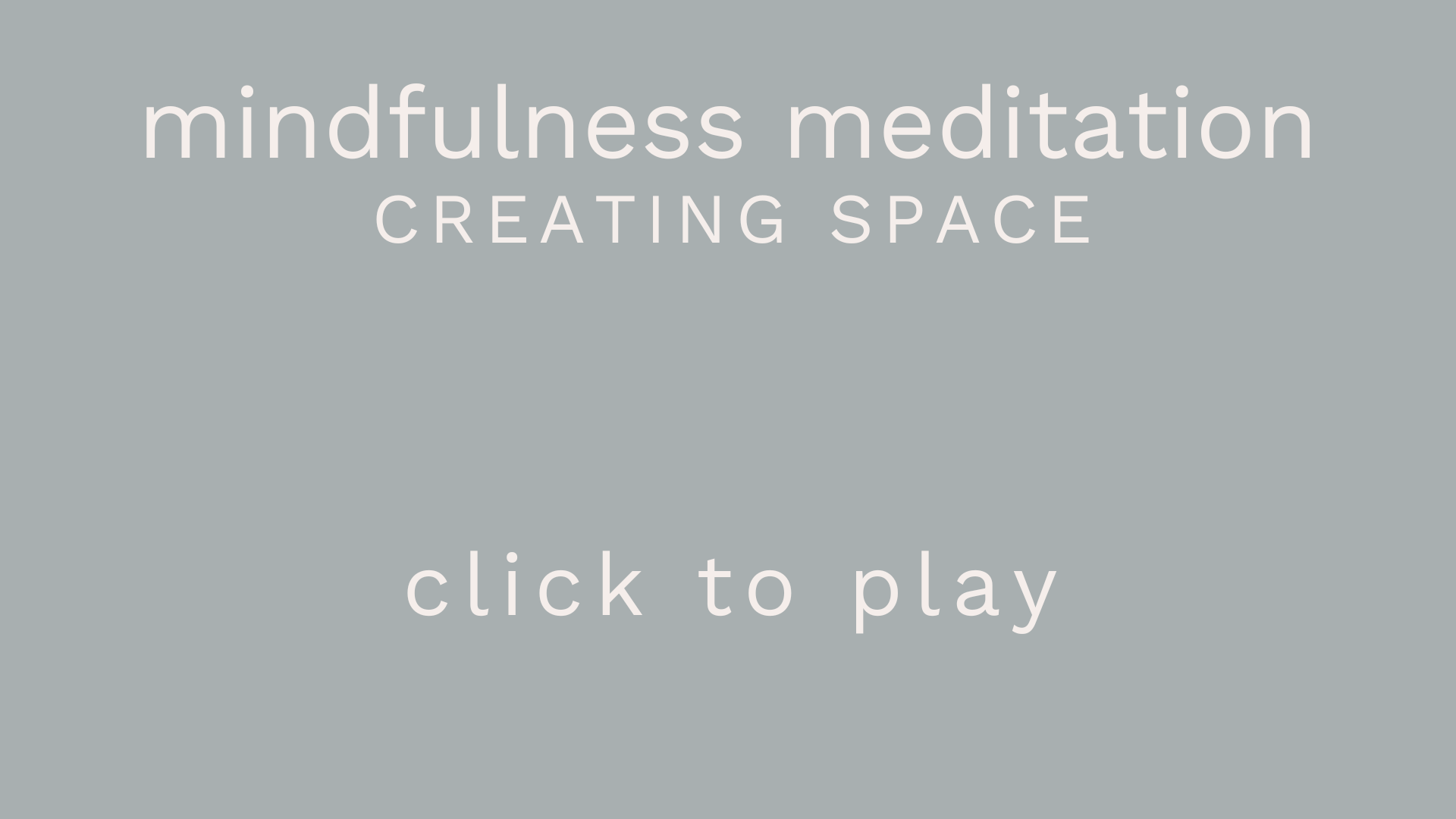
what is mindfulness?
practices to calm, clear, and feel more connected
You are the sky, everything else is just the weather.
—Pema Chodron
Imagine you are relaxing in a hammock in the backyard. You hear nature all around you—birds singing, children laughing, a plane overhead. All of these sounds seem to rise and fall on their own, in and out of your awareness. As you just relax, not following any sound with your attention, it feels like they are just ocean waves, rising and falling, like the continual flow of the changing tide.
Then suddenly, workers across the street start up a jackhammer. Your attention is consumed by the sound. It's all you can hear. You forget that this new sound is just one of many in the field of sounds you were relaxing with just moments ago.
If you opened up your awareness once more, you may still hear the dominant sound of the jackhammer, but you might not fixate on it in the same way. Your attention will be wider, looser, and more open . . .
This state of expansive awareness is mindfulness.
It’s where you can pull back from an individual sensation, thought, or event and witness what's happening from a bird’s eye view. Master teacher Pema Chodron offers a wonderful metaphor that illustrates this perfectly: “You are the sky, everything else is just the weather.” The sky is your expansive awareness, the container for the weather— emotions, thoughts, sensations (pain, discomfort), sounds, and experiences. While the weather is unpredictable and constantly changing, the sky remains calm, steady, open and limitless—and so are you, in a state of mindfulness.
Renowned Mindfulness Expert, John Kabat-Zinn has defined mindfulness meditation as “the awareness that arises from paying attention, on purpose, in the present moment and non-judgmentally.”
By focusing on the breath, the idea is to cultivate attention on the body and mind as it is moment to moment, and so help with pain, both physical and emotional.
But mostly, what I love about mindfulness is how it centers us in our heart, with full body presence. The Chinese character for “mindfulness” is nian. It is a combination of two separate characters, each with its own meaning. The top part of the character means “now” and the bottom part of the character means “heart” or “mind.” Literally, the combined character means the act of experiencing the present moment with your heart.
Zen Master Thich Nhat Hahn says that mindfulness is the moment-to-moment awareness of what is occurring in and around us. By being present and mindful of the present moment, we can accept what is at that moment as it is, allowing change to happen naturally, without struggle, without the usual resistance and judgment that cause us to suffer more.
FREE meditation for spacious clarity
In this practice, we’ll explore spaciousness using a listening meditation to become more aware of where our attention wanders, how it grips, and how we can open it back up.
join me for my Free Weekly Meditation on Zoom:
what are the benefits of mindfulness?
The benefits of mindfulness have been shared in the ancient traditions of yoga and Ayurveda for thousands of years, and modern science is just catching up to these facts of the way our bodies and brains work as we move through the world.
My offerings as a yoga and meditation teacher are rooted in mindfulness because of its profound effects on our physiology, in measurable and immeasurable ways, all of which helps us to feel more aware and engaged in our work, relationships, and play.
Some of the transformations I’ve seen include:
Improved digestion
Better and more restful sleep
Reduced chronic and acute pain
Improved blood pressure, cholesterol, and overall heart health
Improved breath capacity and oxygenation
Improved balance, flexibility, and strength
Reduced stress, anxiety, and depression
Recovery from addiction and trauma
Improved immune response
Increased empathy and compassion
And more . . .



